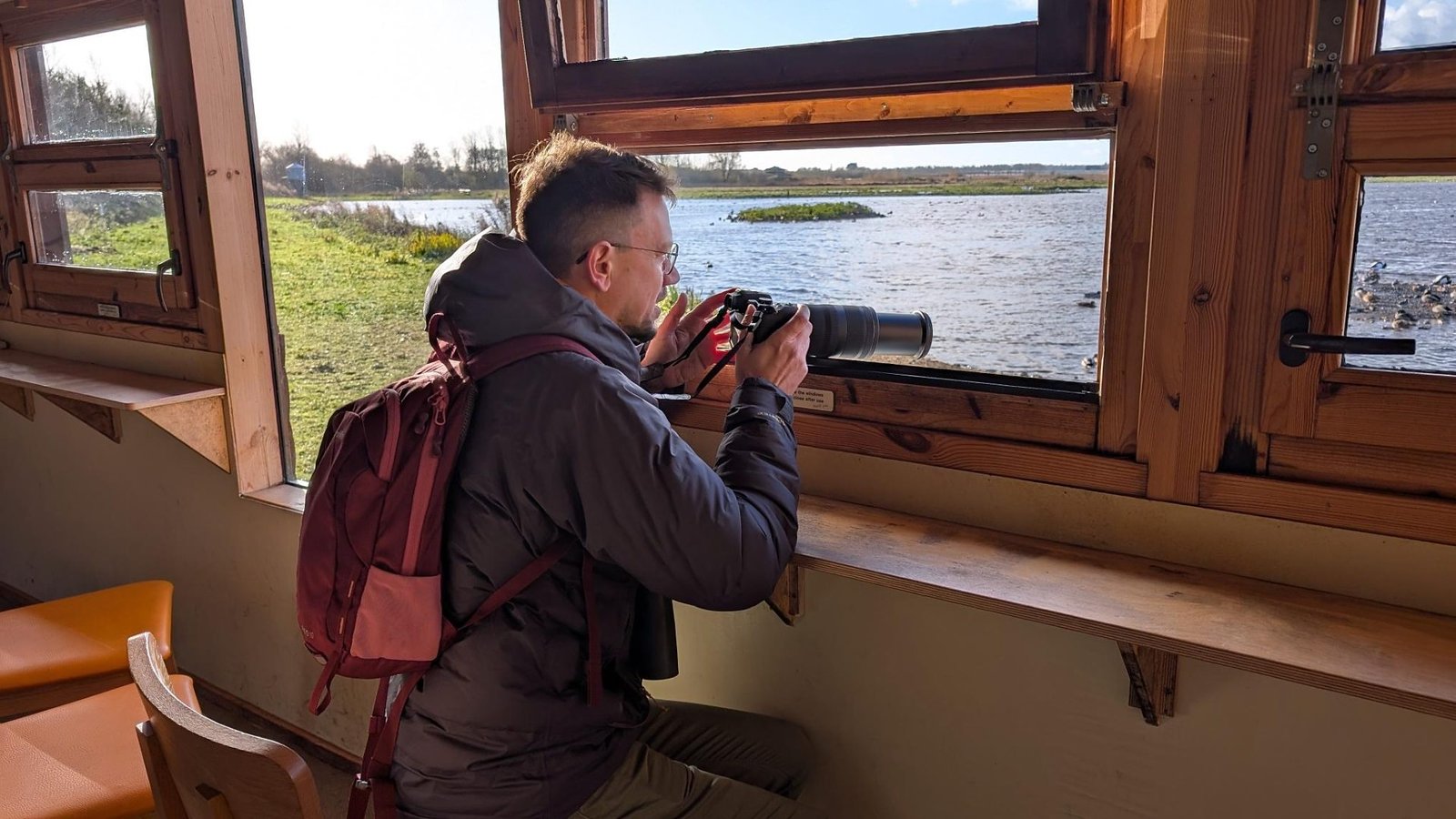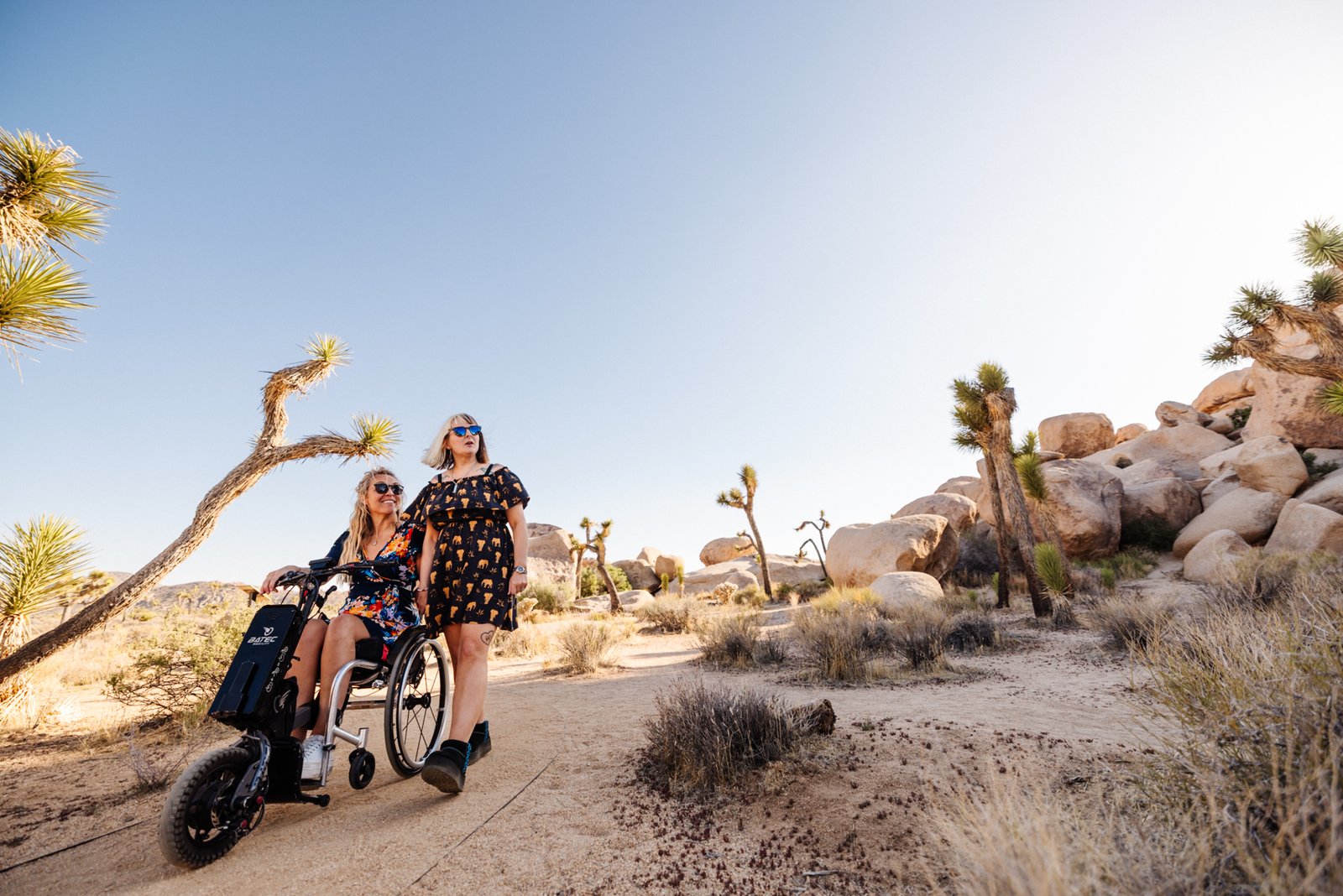Travel Journals
UK car drivers: share your memories and photos of your convertible | Motoring

According to a new study, convertibles have dwindled to a 25-year low with only 16 new models for sale across the UK’s most popular car manufacturers. SUVs are taking the rap for the decline of convertibles in Britain as people move towards favouring bulkier vehicles.
Data from CarGurus UK found that in 2024 there were only 12,173 new convertibles registered in the UK compared to 94,484 in 2004. One of cinema’s most iconic cars is probably the 1966 Ford Thunderbird convertible that Thelma and Louise drove on their their adventures.
We would like to hear from people who have, or previously had, a convertible. What are your best and worst memories? Did you do any road trips and where did you enjoy travelling to the most?
Share your experience
You can tell us your memories of your convertible car by filling in the form below.
If you’re having trouble using the form click here. Read terms of service here and privacy policy here.
Travel Journals
Tom McKinney to take Radio 3 Breakfast listeners on a road trip across Gloucestershire and Somerset

BBC Radio 3 Breakfast is on the road again this August, as Tom McKinney presents a week of live broadcasts, taking listeners on a journey through Gloucestershire and Somerset, culminating in a weekend of BBC Proms performances in Bristol.
Inspired by Tom’s passion for nature and birds, Breakfast presents its usual selection of the best music to start the morning, while visiting some of the most famous wetlands, forests and sites of cultural interest across Gloucestershire and Somerset. Live performances by local musicians and contributions from naturalists and historians help bring the journey to life, telling stories of the rich heritage of the area.
The road trip starts at Wildfowl & Wetlands Trust Slimbridge, on the River Severn Estuary, and continues to Westonbirt National Arboretum near Tetbury. The programme then travels to Bath with a broadcast from the city’s renowned Grand Pump Room, and then to the Bishop’s Palace & Gardens in Wells. One last stop in Tyntesfield – the Victorian revival country house and estate near Wraxall – heralds a weekend of BBC Proms performances at Bristol Beacon on Friday 22, Saturday 23 and Sunday 24 August.
Through the week, listeners join Tom on a canoe ride along the waterways in Slimbridge, a 13-metre-high treetop canopy walkway in Westonbirt, and a wander around the rooms and gardens at Tyntesfield estate. In Bath, Tom visits the Grand Pump Room – the city’s cultural and social heart for over 200 years – and composer and astronomer William Hershel’s house, where he discovered the planet Uranus. From there, Tom travels to Wells, exploring the 14 acres of gardens of The Bishop’s Palace (and encountering its famous bell-ringing swans) and the cathedral to discuss its rich musical history.
The week of live broadcasts from Gloucestershire and Somerset culminates in the BBC Proms weekend from Bristol Beacon, including five concerts, all broadcast on BBC Radio 3 and BBC Sounds: a collaboration between Paraorchestra and award-winning duo The Breath (22/08 – Beacon Hall); a live edition of Late Junction with presenter Verity Sharp (22/08 – Lantern Hall); the Danish National Vocal Ensemble with music by Bach, Ethel Smyth, Nielsen and more (23/08 – St George’s Bristol); Britten Sinfonia conducted by Tess Jackson, with violinists Zoë Beyers and Miranda Dale (23/08 – Beacon Hall); and an exploration of Italian composers with the Orchestra of Welsh National Opera (24/08 – Beacon Hall).
Previous Radio 3 Breakfast road trips have seen the programme travel through the North East of England, lough-to-lough across Northern Ireland and coast-to-coast through the Scottish Highlands, follow the Rivers Ure and Ouse to the Humber in Yorkshire, and journey along the River Severn from Wales into England and back. Breakfast has also come live from forests in Co. Down, Hampshire and Snowdonia.
Tom McKinney, BBC Radio 3 Breakfast Presenter, says: “I am very excited to present my first ever Breakfast road trip. Across the course of what’s set to be a very special week on Radio 3, I look forward to sharing gentle sounds of waterways, rustling leaves and morning birdsong with audiences at home, as well as discovering more about some of the area’s landmarks and musical traditions. This is shaping up to be a true feast for the ears!”
Sam Jackson, Controller BBC Radio 3 and BBC Proms, says: “Keeping up with Breakfast’s tradition of regular UK road trips celebrating local culture, history and nature, we are delighted to present a week of live broadcasts across Gloucestershire and Somerset, all leading up to a packed weekend of BBC Proms at Bristol Beacon. We invite listeners from across the UK to join us for what promises to be a glorious journey, enjoying the opportunity to experience the atmosphere of wetlands, forests and historical buildings as we begin the morning on BBC Radio 3”.
BBC Radio 3 Breakfast from Gloucestershire and Somerset will be live Monday 18 – Friday 22 August, 6.30-9.30am and available on BBC Sounds.
EC
Follow for more
Travel Journals
An art-filled road trip from Chicago to Detroit

To drive through Detroit is to move through a landscape shaped by both its storied industrial legacy and its long-standing creative community, where generations of artists have turned the city’s factories, urban prairies and waterfront into a living canvas.
The third installment of the WBEZ and Chicago Sun-Times visual art road trip heads east to Detroit and its smaller neighboring cities, where the materials of the past — steel, brick, salvaged wood — aren’t just inspiration but building blocks in a vibrant cultural landscape.
DEARBORN: Arab American Heritage and next-level cashews
Before delving into Detroit, first stop in Dearborn, a suburb that offers a cultural experience rooted in industrial history and Arab American heritage.
The Henry Ford Museum of American Innovation houses iconic objects from American life. “It’s just huge, like the size of an airplane hangar,” said Shelley Selim, the Mort Harris Curator of Automotive, Industrial and Decorative Design at the Detroit Institute of Arts. “There’s a Buckminster Fuller Dymaxion House there, and the Eames ‘Mathematica’ exhibition that they designed for a World’s Fair for IBM.” Next door, Greenfield Village recreates streetscapes from centuries past, with historic homes, steam engines and a glassblowing studio where visitors can watch artists at work.
Arab American communities have been rooted in east Dearborn for more than a century. Many families arrived in the early 20th century to work for Ford and other automakers. In 2023, it became the country’s first city with an Arab American majority.
AlTayeb remains a favorite for Lebanese breakfast platters. The fatteh stands out — layers of toasted pita, chickpeas, warm yogurt, pine nuts and olive oil. Portions are generous; flavors are bold, earthy and bright. For a hearty lunch, try the combo platter at James Beard Award-winning Al Ameer, which includes a generous spread of chicken tawook, lamb kofta, shish kebab, falafel and perfectly fluffed rice.
Before leaving town, Hashem’s Nuts & Coffee Gallery offers a fragrant stop. Shelves are packed with Middle Eastern spices, roasted coffees, and hard-to-find blends like ras el hanout. Selim makes regular trips to the shop where she stocks up on jumbo Brazilian cashews.
DETROIT: A city of space, memory and imagination
The Detroit Institute of Arts (DIA) houses one of the country’s most significant public collections. At its center is the Diego Rivera Court, named after the renowned Mexican painter and muralist who vividly portrayed social inequity, labor struggles and industrialization. “It rewards you every time you look at it,” said Selim. “There’s even a cheat sheet in the tile floor — little carved labels tell you what each panel depicts.” Rivera’s 1932 fresco of the Ford Rouge Plant stretches across four walls and grapples with the tensions between machines, myth, labor and land.
Nearby, “Quilting Time,” a large mosaic by Romare Bearden, pays tribute to communal labor and visual abstraction. “It is just a really stunning representation of community, of women coming together,” Selim said. “And the abstraction of the quilts is just spectacular.”
East of the museum, the Shepherd — a decommissioned Catholic church — has been converted into a contemporary art space by Library Street Collective, a Detroit-based organization known for turning historic buildings into community cultural hubs.
The current Shepherd show, “The Sea and the Sky, and You and I,” centers artists whose work “reflects on histories of landscape.” Among the works are three sculptures by Detroit artist Scott Hocking, who built the pieces from salvaged materials collected at a nearby marina. The artist “considers the cultural memory of the city and the material memory of the city,” said Allison Glenn, a Detroit native who curated the show.
The show, which runs through Aug. 30, also includes work by Midwest sculptor and activist Jordan Weber, whose installation features a spliced GTO Judge — a muscle car originally built by Black assembly line workers — emerging from the floor like a buried relic. The sculpture echoes Weber’s ongoing collaboration with Canfield Consortium, a local nonprofit in the East Canfield neighborhood, which has long grappled with industrial pollution from nearby auto factories. There, Weber installed an air-quality beacon and plans to plant a conifer forest to absorb airborne pollutants.
Public art like Weber’s builds on a long legacy of community-based arts efforts in Detroit. One of the most recognizable is The Heidelberg Project, started in the 1980s by artist Tyree Guyton, who transformed his family’s former home — and eventually two surrounding blocks left in disrepair after the 1967 uprising — into a colorful, ever-evolving wonderland.
For a different kind of spin through history, Submerge is home to the techno label Underground Resistance. Glenn calls it “the world’s first known techno museum.” The space includes a basement record store and rotating tours led by Detroit music legends like Jon Dixon and Cornelius Harris.
Across town, on the city’s West Side, the Dabls Mbad African Bead Museum spans an entire block. “The founder, Olayami Dabls, really appreciated the symbolic and cultural significance of beads within the African and African diasporic communities,” Selim said. “It’s a really cool artist-created environment.”
John K. King Used & Rare Books, located in a former glove factory just west of downtown, feels suspended in time. “Every sale is handwritten down in a ledger,” said Selim of the DIA. Pull-cord lights and floor-to-ceiling stacks make the browsing feel both intimate and endless. “You’ll always find something unique and interesting.”
Round out the day at Paramita Sound, a downtown wine bar and listening room that pairs vinyl sets with high communal tables and natural wine. “Even if you don’t want to talk to anyone,” said Glenn, “you’ll be socializing.”
BLOOMFIELD HILLS: Midcentury icons and palatial grounds
Set on more than 300 acres of landscaped grounds and landmark architecture, Cranbrook Art Museum in Bloomfield Hills beckons as a design destination and a place to wander. “People just explore the grounds for landscape architecture and sculpture,” said Laura Mott, chief curator of the museum. “It’s really just one of the gems of America.”
The current show, “Eventually Everything Connects: Mid-Century Modern Design in the U.S.,” is an ambitious exhibition that revisits the midcentury design canon. “We’ve done a lot of work excavating individuals who are diversifying American modern design,” said Mott. That includes a “textile forest” that hangs from the museum ceiling and walls and features works by such designers as Alexander Girard, Ruth Adler Schnee and Olga Lee. The show is on view through Sept. 21.
Cranbrook’s buildings themselves are also part of the draw. The museum was designed by Eliel Saarinen and opened in 1942. Visitors can also tour the Saarinen House, where Eliel and Loja Saarinen lived while the Cranbrook academy was established, or book a visit to Frank Lloyd Wright’s Smith House, one of Michigan’s best-preserved examples of Wright’s Usonian homes.
Bonus: Where to Stay
For those making a weekend of it, ALEO Detroit offers a low-key, art-forward stay in Detroit’s East Village. Warda Bouguettaya, a James Beard Award–winning chef, runs the breakfast program, and the on-site bar Father Forgive Me opens in the afternoon. “The balcony is right above the bar,” said Glenn. “It’s like your backyard, but with better lighting.” And funky, orange wine.
Or try The Siren Hotel, which offers a gilded, atmospheric experience. Set in a former 1920s high-rise, the chic design leans maximalist: velvet upholstery, terrazzo floors and heavy drapery.
Elly Fishman is a journalist and author whose work explores immigration, incarceration and American culture, including the arts. Her writing has appeared in the New York Times, GQ, Rolling Stone, WBEZ Chicago, among others. She is currently working on her second book, forthcoming from HarperCollins.
Travel Journals
Sophie Morgan to host new series on California’s best road trips

The USA is a destination that’s made for road trips – the only problem is deciding where to start. But if California was on your shortlist, we think this new series might just convince you to book those flights.
Disability advocate and Wanderlust contributing editor Sophie Morgan has just unveiled Joy Diversion, a three-part series exploring the Sunshine State’s epic road adventures.
In the series, Morgan showcases three distinct itineraries: City to Desert, which takes in Greater Palm Springs, Joshua Tree National Park and the Western-themed Pioneertown; Mountains to Lakes, which follows Highway 395 from Mammoth Lakes to the shores of South Lake Tahoe; and Vineyards to the Coast, which puts the spotlight on the wine country of the Santa Ynez Valley, followed by Santa Barbara.
Episodes can be found on Visit California’s YouTube channel, with two episodes already live. The third will premier on 11 August.
Morgan brings a personal perspective to the series, having moved to LA last year.
“I truly believe that California is one of the most accessible destinations in the world, which is why I’m so excited to partner with Visit California on this epic road trip series,” Morgan said.
“Since moving to LA, I’ve spent so much time exploring the state’s hidden corners with friends, old and new and I’ve been blown away by the diversity of the state. Joy Diversion is a love letter to those journeys. I hope it inspires people, of all abilities, to take their own road trip and feel that same joy, freedom and sense of belonging.”
In Joy Diversion, Morgan is joined by friends including broadcaster, author and LGBTQ+ advocate Riyadh Khalaf and Emmy-award winning TV presenter Emily Evans.
The new series will also feature on Visit California’s Accessibility Hub, which provides information for travellers with disabilities including wheelchair-friendly accommodation and sensory-friendly destinations.
More information: visitcalifornia.com/things-to-do/accessible-travel
Read next: Welcome to California
-

 Brand Stories2 weeks ago
Brand Stories2 weeks agoBloom Hotels: A Modern Vision of Hospitality Redefining Travel
-

 Brand Stories2 weeks ago
Brand Stories2 weeks agoCheQin.ai sets a new standard for hotel booking with its AI capabilities: empowering travellers to bargain, choose the best, and book with clarity.
-

 Destinations & Things To Do3 weeks ago
Destinations & Things To Do3 weeks agoUntouched Destinations: Stunning Hidden Gems You Must Visit
-

 Destinations & Things To Do2 weeks ago
Destinations & Things To Do2 weeks agoThis Hidden Beach in India Glows at Night-But Only in One Secret Season
-

 AI in Travel3 weeks ago
AI in Travel3 weeks agoAI Travel Revolution: Must-Have Guide to the Best Experience
-

 Brand Stories1 month ago
Brand Stories1 month agoVoice AI Startup ElevenLabs Plans to Add Hubs Around the World
-

 Brand Stories4 weeks ago
Brand Stories4 weeks agoHow Elon Musk’s rogue Grok chatbot became a cautionary AI tale
-

 Brand Stories2 weeks ago
Brand Stories2 weeks agoContactless Hospitality: Why Remote Management Technology Is Key to Seamless Guest Experiences
-

 Asia Travel Pulse1 month ago
Asia Travel Pulse1 month agoLooking For Adventure In Asia? Here Are 7 Epic Destinations You Need To Experience At Least Once – Zee News
-

 AI in Travel1 month ago
AI in Travel1 month ago‘Will AI take my job?’ A trip to a Beijing fortune-telling bar to see what lies ahead | China

You must be logged in to post a comment Login